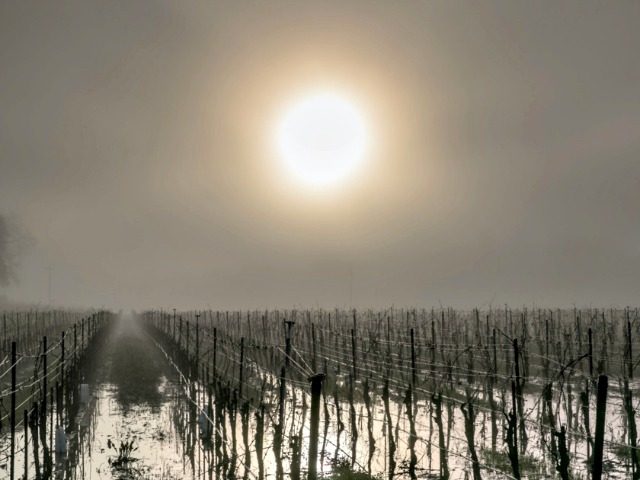An artificial intelligence website has introduced a project that shows horrific future climate change scenarios, from smog-covered cities to flooded neighborhoods. The website admits that the images “are not real, they serve to raise awareness and incite action.”
“But the environmental disasters they portray are very real,” the website states.
“This Climate Does Not Exist is an AI-driven experience based on empathy, allowing users to imagine the environmental impacts of the current climate crisis, one address at a time,” the website states.
“We named this project This Climate Does Not Exist to emphasize that climate change is having dire consequences all around the world right now, even if you aren’t experiencing it in your own backyard,” the website states.
The project was not created by climate scientists but AI scientists from Mila, the Quebec AI Institute. The website states:
While we are not climate scientists, we have done our very best to gather credible sources from partners such as the Climate Action Network.We are computer scientists with a keen interest in climate change and environmental impacts, and we want to use AI to make the world a better place.
USA Today reported on the project:
You can see how Disneyland will look like covered in smog, the way extreme smog blanketed Beijing in 2014. You can see what your childhood home will look like after it is flooded by rising sea levels, the way floods devastated Indonesia in 2020 after widespread deforestation.
USA Today claims the fake images are “not meant to make you feel depressed:”
“The images can be kind of eye opening, but then you take that, and you learn about what you can do, and you learn about how you can get involved,” says Sasha Luccioni, a postdoctoral researcher who works at Mila, the Quebec AI Institute behind the climate project.
And those behind the project admit they had to make up the scenarios because they could not find actual photographs:
When the Mila researchers couldn’t find enough real-world images to train their model on, they turned to virtual images from local video game makers. They asked developers behind the video game Watchdogs to flood the virtual world they built of the San Francisco Bay Area and take screenshots to provide data for Mila’s models.
“[Mila] collaborated with climate communicators and climate scientists to build messaging they hope will encourage positive change,” USA Today reported.
Follow Penny Starr on Twitter

COMMENTS
Please let us know if you're having issues with commenting.